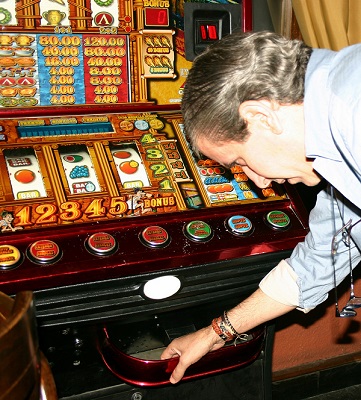Slot machines are extremely popular forms of entertainment. Interestingly enough, the mechanisms that are involved are not understood by many. Although this can be a complicated topic, let us have a look at the main functions behind a traditional machine in comparison to its electronic counterpart.
Traditional Slot Machines
 These units are comprised of a series of gears, levers and discs. Three wheels which display symbols are mounted on a central shaft. A second shaft underneath supports what is known as a “kicker” (a metal piece with three protruding paddles). These paddles will press up against notches found within the discs on the central shaft above. Springs hold these mechanisms in place. When a player pulls on the lever, the springs will be released and the central and secondary wheels will start spinning. Once the paddles are aligned correctly with the notches, the slots will stop spinning one at a time. This produces a suspenseful display of the items as they line up in a row.
These units are comprised of a series of gears, levers and discs. Three wheels which display symbols are mounted on a central shaft. A second shaft underneath supports what is known as a “kicker” (a metal piece with three protruding paddles). These paddles will press up against notches found within the discs on the central shaft above. Springs hold these mechanisms in place. When a player pulls on the lever, the springs will be released and the central and secondary wheels will start spinning. Once the paddles are aligned correctly with the notches, the slots will stop spinning one at a time. This produces a suspenseful display of the items as they line up in a row.Computerized Versions
Machines that are controlled by computers utilize what are known as random number generators to produce results. In other words, each round has an equal chance of winning as the next. As far as mechanics are concerned, the machine uses what is known as a “step motor” that causes a wheel to spin and to stop at a predetermined point. Each of these three motors is controlled by digital pulses of electricity which are activated once the player either pulls a lever or (more commonly) presses a button on the machine. Like traditional machines, each slot will stop ahead of the next; producing the sense of suspense that slots have become known for. Random number generation is said to be preferred, as mechanical slots could potentially be tampered with.So, it is clear to appreciate that slot machines are indeed complicated devices. Still, such intricate mechanisms are only meant to enhance the sense of overall enjoyment encountered during any round.